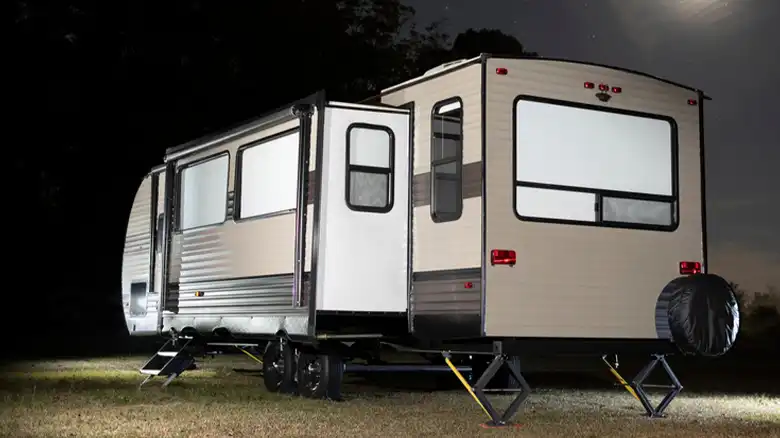As an avid RV enthusiast who loves road-tripping across the country, keeping my RV’s fresh water system clean is a top priority. Nothing spoils an amazing destination like contaminated drinking water or bacteria-laden shower water. That’s why I make it a point to thoroughly sanitize my RV’s fresh water tank and lines on a regular basis.
Over my many years of RVing, I’ve tried every trick and technique to sanitize and disinfect my water system. That’s why I’m here to share my tried-and-true process using three common sanitizing methods – bleach, commercial RV cleaners, and vinegar. Whether you’re dealing with a brand new RV fresh water system or one that’s been sitting all winter, these methods will have you on your way to fresh, potable water in no time.

1. How to Clean Your RV Water Tank with Bleach
Bleach is the most effective way to sanitize RV water tanks and water lines, but it is important to use it carefully and follow all safety instructions.
Step 1: Turn off the water heater and pump.
Step 2: Bypass the water heater and filter.
Step 3: Drain the system by opening the low-point drain valves.
Step 4: Close the low-point drain valves.
Step 5: Fill the tank with fresh water until it is about 3/4 full.
Step 6: Add 1/2 cup of bleach for every 10 gallons of water in the tank.
Step 7: Turn on the water pump and flush the system by opening all of the faucets and running water until you smell bleach.
Step 8: Close all of the faucets and let the bleach solution sit in the tank for at least 6 hours.
Step 9: Drain the tank and flush the system again with fresh water until you can no longer smell bleach.
Step 10: Turn on the water heater and pump.
2. Steps for Sanitizing with Vinegar
Vinegar is another effective way to sanitize RV water tanks and water lines. It is less harsh than bleach, but it will not kill all types of bacteria.
Step 1: Follow steps 1-3 above.
Step 2: Fill the tank with fresh water until it is about 3/4 full.
Step 3: Add 1 gallon of vinegar for every 10 gallons of water in the tank.
Step 4: Follow steps 7-10 above.
3. Using Commercial RV Sanitizers – A Quick Solution
There are a number of commercial RV sanitizers available that are specifically designed to sanitize RV water tanks and water lines. These products are easy to use and follow the instructions on the product label.
Step 1: Follow steps 1-3 from way 1.
Step 2: Fill the tank with fresh water until it is about 3/4 full.
Step 3: Add the RV sanitizer to the tank according to the product label instructions.
Step 4: Follow steps 7-10 from way 1.
Benefits of Regular RV Water System Sanitization
Now you already know the methods, but there’s “but” still remains. Why properly sanitizing your RV water system is so important after all? Here are the reasons –
- Removes bacteria, viruses, mold, algae, and other microorganisms
- Prevents foul tastes and odors
- Improves water flow by removing scale and buildup
- Ensures fresh, clean drinking water for your health
- Helps tanks, pipes, and fixtures last longer
Neglecting to sanitize can lead to symptoms like upset stomach, nausea, and diarrhea from contaminated water. It’s a quick and easy process that pays off every time you turn on the faucet or take a shower in your RV.
Answers That You’ve Asked For
Can I use bleach to sanitize my RV water tank if I have a water filter?
No, you should not use bleach to sanitize your RV water tank if you have a water filter. Bleach can damage the water filter, and you should bypass the filter before sanitizing the tank.
How often should I sanitize my RV water tank and water lines?
You should sanitize your RV water tank and water lines at least once a year, or more often if you use your RV frequently or store it for an extended period of time.
Can I use a commercial RV sanitizer instead of bleach or vinegar?
Yes, you can use a commercial RV sanitizer instead of bleach or vinegar. Commercial RV sanitizers are specifically designed to sanitize RV water tanks and water lines, and they are also less harsh than bleach and vinegar.


